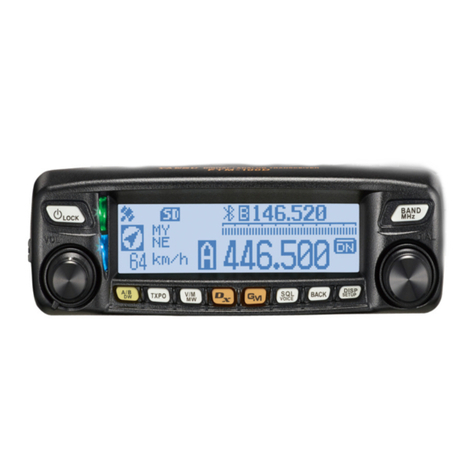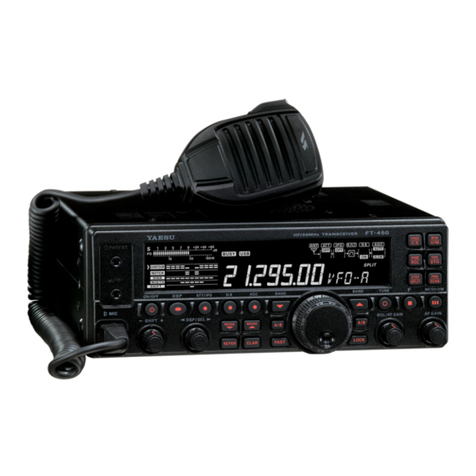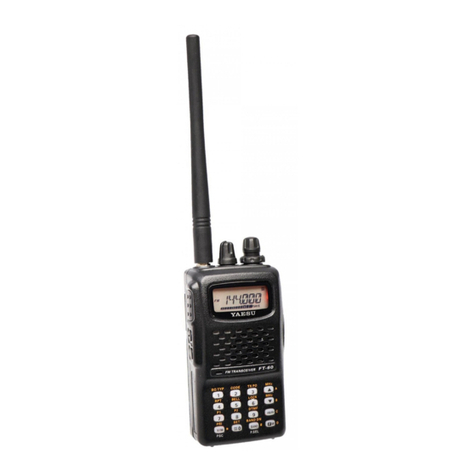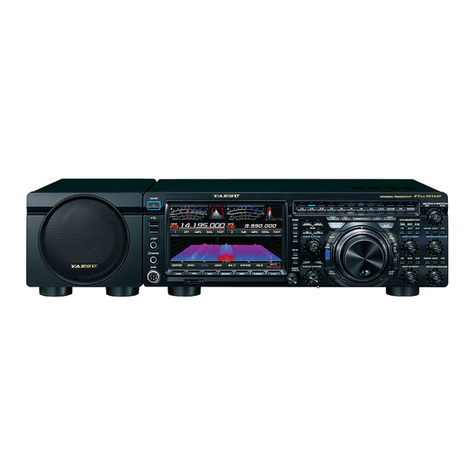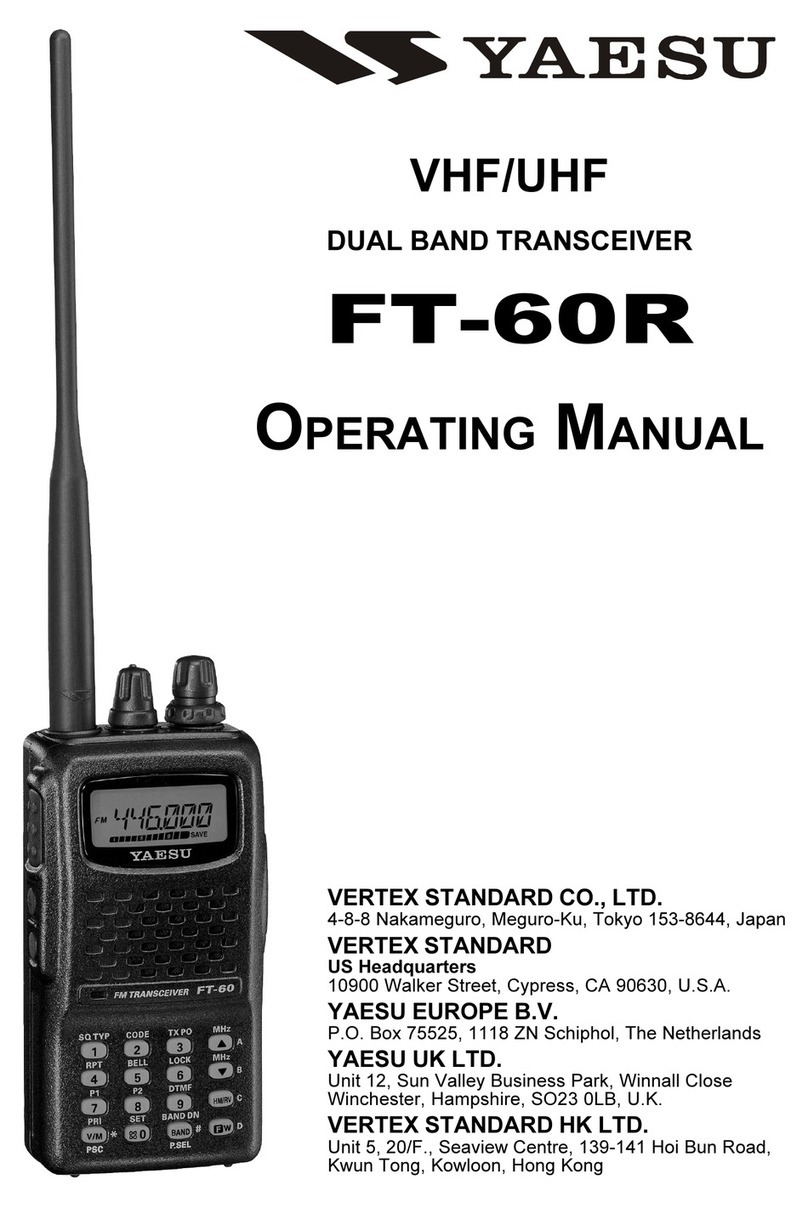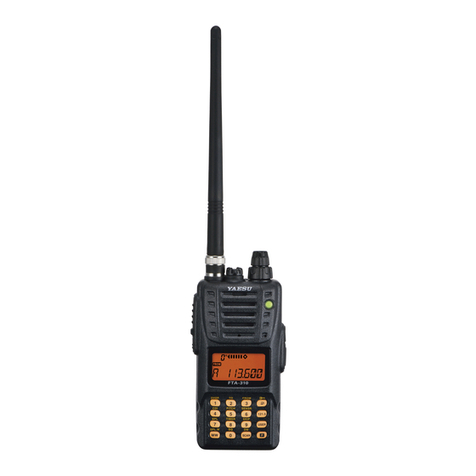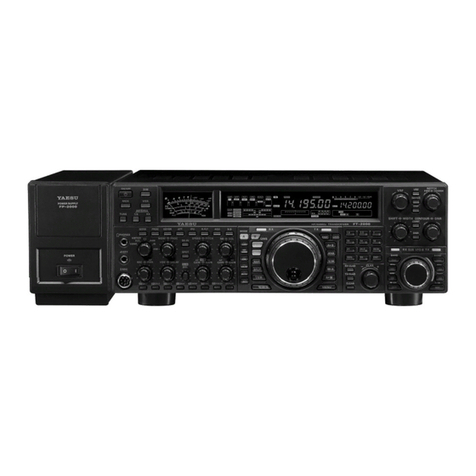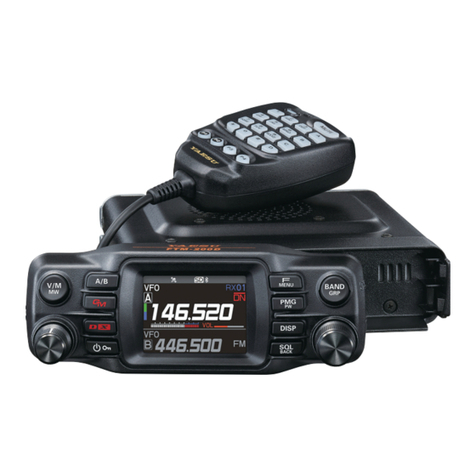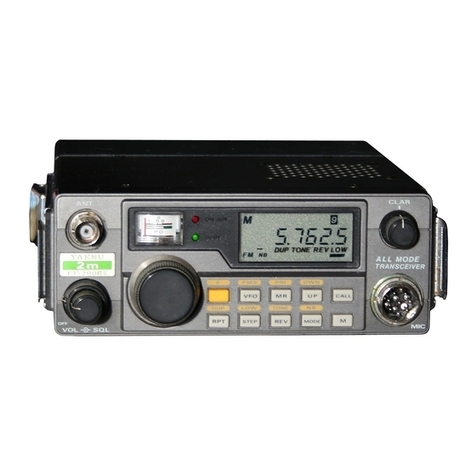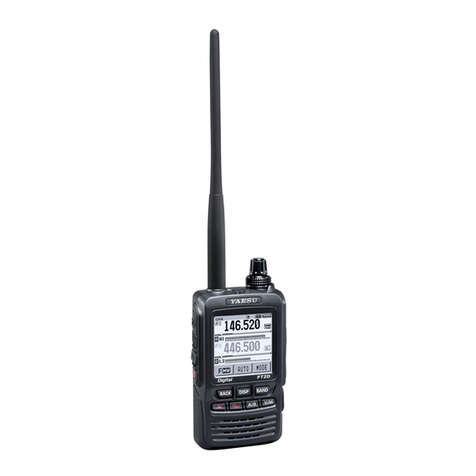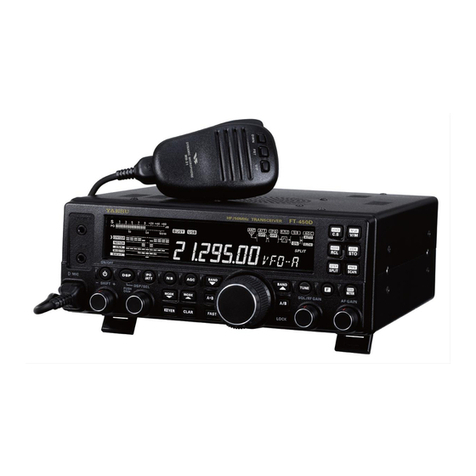
FCC ID: K66GX1280S
Alignment
Vertex Standard Co,. Ltd.
1
GX1280S Alignment
The GX1280S has been carefully aligned at the factory for the specified performance
across the marine band.
Realignment should therefore not be necessary except in the event of a component
failure. All component replacement and service should be performed only by an
authorized Standard Horizon representative, or the warranty policy may be voided.
The following procedures cover the sometimes critical and tedious adjustments that
are not normally required once the transceiver has left the factory. However, if damage
occurs and some parts are replaced, realignment may be required. If a sudden problem
occurs during normal operation, it is likely due to component failure; realignment
should not be done until after the faulty component has been replaced.
We recommend that servicing be performed only by authorized Standard Horizon
service technicians who are experienced with the circuitry and fully equipped for repair
and alignment. Therefore, if a fault is suspected, contact the dealer from whom the
transceiver was purchased for instructions regarding repair. Authorized Standard
Horizon service technicians realign all circuits and make complete performance checks
to ensure compliance with factory specifications after replacing any faulty components.
Those who do undertake any of the following alignments are cautioned to proceed at
their own risk. Problems caused by unauthorized attempts at realignment are not
covered by the warranty policy. Also, Standard Horizon, a division of VERTEX
STANDARD, must reserve the right to change circuits and alignment procedures in
the interest of improved performance, without notifying owners. Under no
circumstances should any alignment be attempted unless the normal function and
operation of the transceiver are clearly understood, the cause of the malfunction has
been clearly pinpointed and any faulty components replaced, and the need for
realignment determined to be absolutely necessary.
The following test equipment (and thorough familiarity with its correct use) is
necessary for complete realignment. Correction of problems caused by misalignment
resulting from use of improper test equipment is not covered under the warranty policy.
While most steps do not require all of the equipment listed, the interactions of some
adjustments may require that more complex adjustments be performed afterwards. Do
not attempt to perform only a single step unless it is clearly isolated electrically from
all other steps. Have all test equipment ready before beginning, and follow all of the
steps in a section in the order presented.
Required Test Equipment
RF Signal Generator with calibrated output level at 200 MHz
Deviation Meter (linear detector)
AF Millivoltmeter
SINAD Meter


